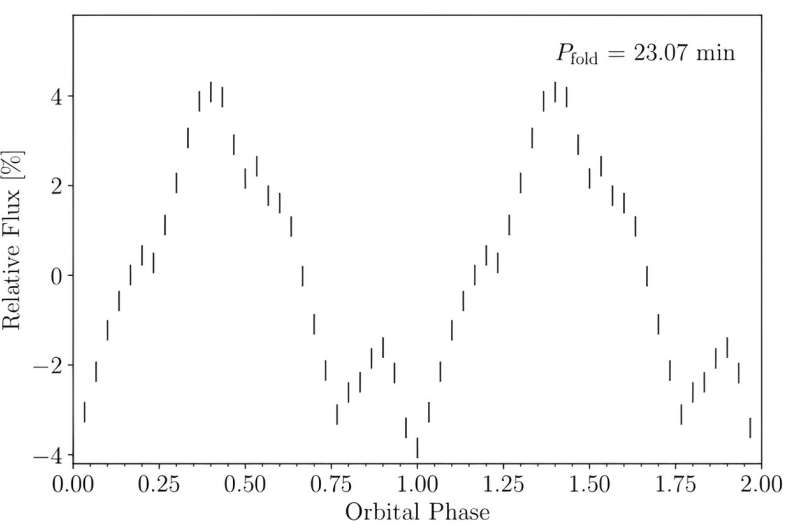November 9, 2023 report
This article has been reviewed according to Science X's editorial process and policies. Editors have highlighted the following attributes while ensuring the content's credibility:
fact-checked
preprint
trusted source
proofread
TESS detects new cataclysmic variable system of a rare type

An international team of astronomers reports the discovery of a new variable system using NASA's Transiting Exoplanet Survey Satellite (TESS). The newfound object, designated TIC 378898110, is an AM Canum Venaticorum binary star—a rare type of a cataclysmic variable. The finding was presented in a paper published November 2 on the pre-print server arXiv.
Cataclysmic variables (CVs) are close binary star systems consisting of a white dwarf (WD) primary that is accreting matter from (usually) a main sequence star. They irregularly increase in brightness, by a large factor, then drop back down to a quiescent state.
AM Canum Venaticorum (AM CVn) systems are a rare type of CVs named after AM Canum Venaticorum—a hydrogen-deficient cataclysmic variable binary in the constellation of Canes Venatici. In general, AM CVn-type systems are ultracompact, mass-transferring binaries with orbital periods between five and 68 minutes. They consist of a white dwarf accreting helium-dominated matter from a degenerate or semi-degenerate donor star. To date, only 56 AM CVns have been discovered.
Now, a team of astronomers led by Matthew J. Green of the Max Planck Institute for Astronomy in Heidelberg, Germany, has detected a new object of this rare class. They initially identified TIC 378898110 as a short-period variable, based on photometric data from TESS. Follow-up ground-based observations allowed them to classify this variable as an AM CV.
"TIC 378898110 is a bright system that shows photometric modulation on a period of 23.07 minutes, first discovered in two min-cadence TESS observations. Its spectrum, photometric period, and accretion-driven photometric flickering support its classification as a high-state AM CVn binary system," the researchers explained.
According to the paper, TIC 378898110, with an apparent magnitude of 14.3 mag, is the third-brightest AM CVn known to date. The system is located about 1,000 light years away, which makes it the twelfth closest AM CVn to Earth.
The mass of the primary star in TIC 378898110 was found to be 0.8 solar masses, while the mass of the secondary star was calculated to be 0.125 solar masses. The orbital period of the system is estimated to be some 22–23 minutes and the orbital inclination was measured to be approximately 74 degrees. Hence, TIC 378898110 is the shortest period binary system discovered by TESS so far.
Furthermore, the observations found that TIC 378898110 shows photometric modulation on a period of 23.07 minutes, which is most likely the superhump period. According to the astronomers the spectrum of TIC 378898110, its photometric period, and accretion-driven photometric flickering suggest that it is a high-state AM CVn binary system.
The study also found that TIC 378898110 has recently undergone an unusual brightening event with an amplitude of 0.3 mag which lasted for approximately one year. During this brightening, the dominant photometric period appears to have decreased from 23.07 minutes to about 18.5–22.5 minutes.
More information: Matthew J. Green et al, TIC 378898110: A Bright, Short-Period AM CVn Binary in TESS, arXiv (2023). DOI: 10.48550/arxiv.2311.01255
Journal information: arXiv
© 2023 Science X Network





















